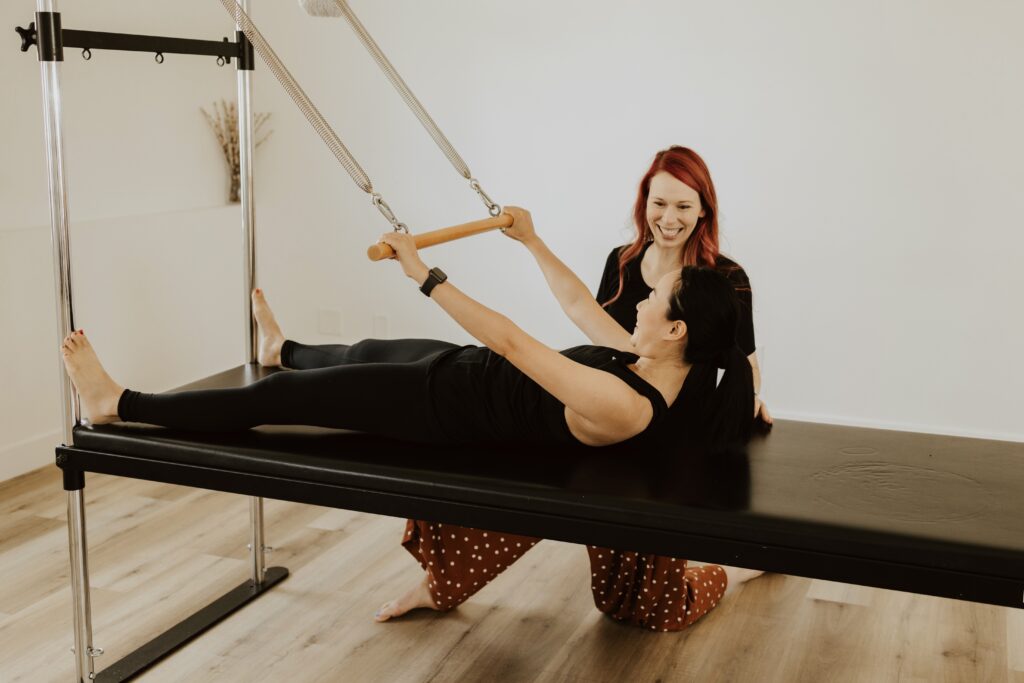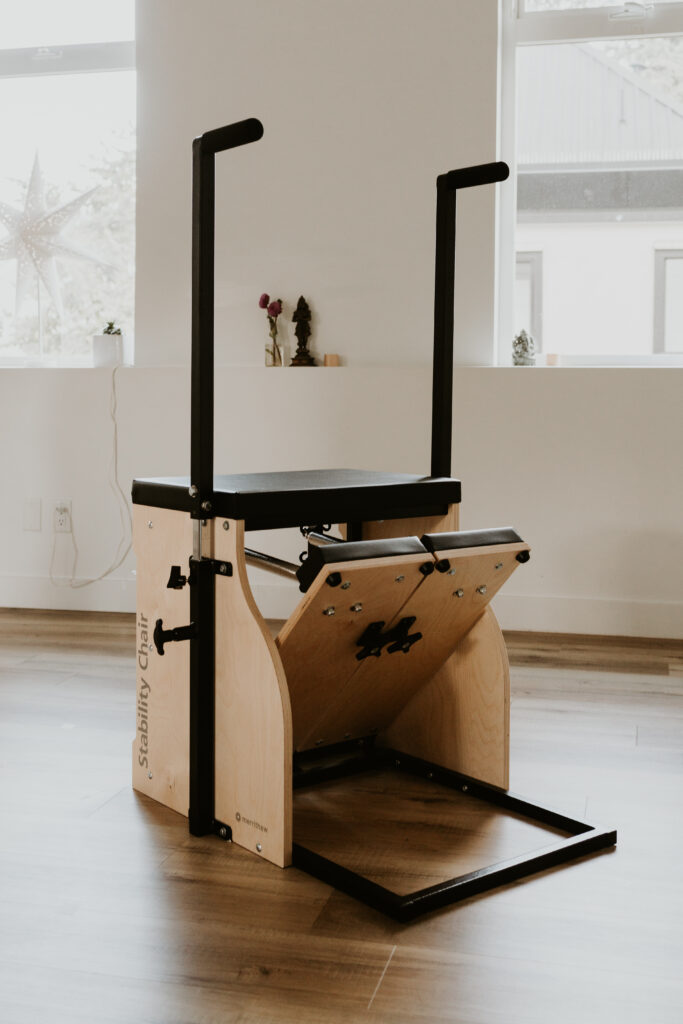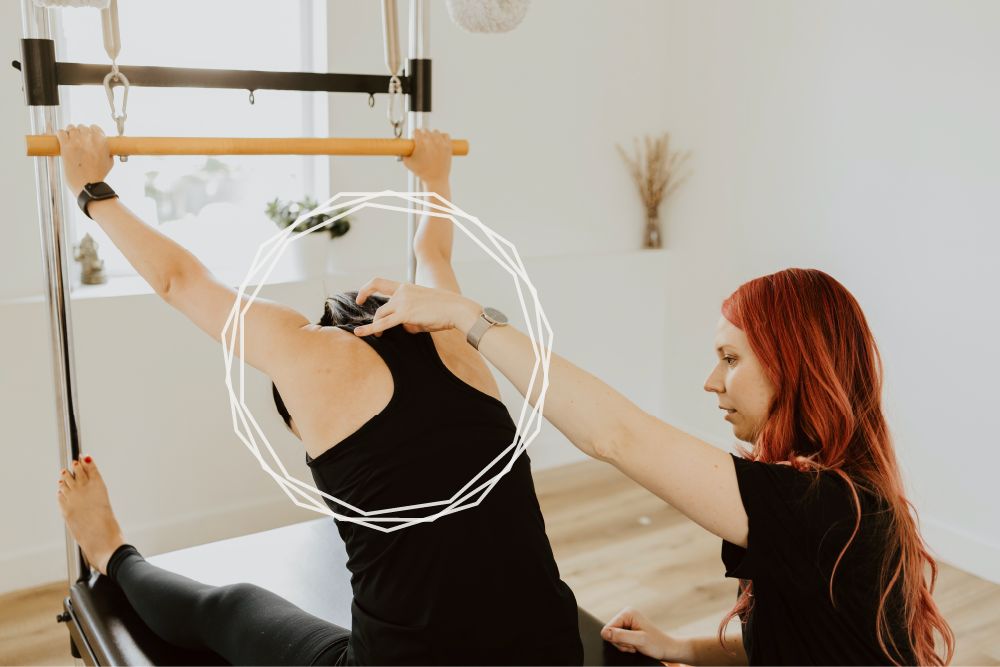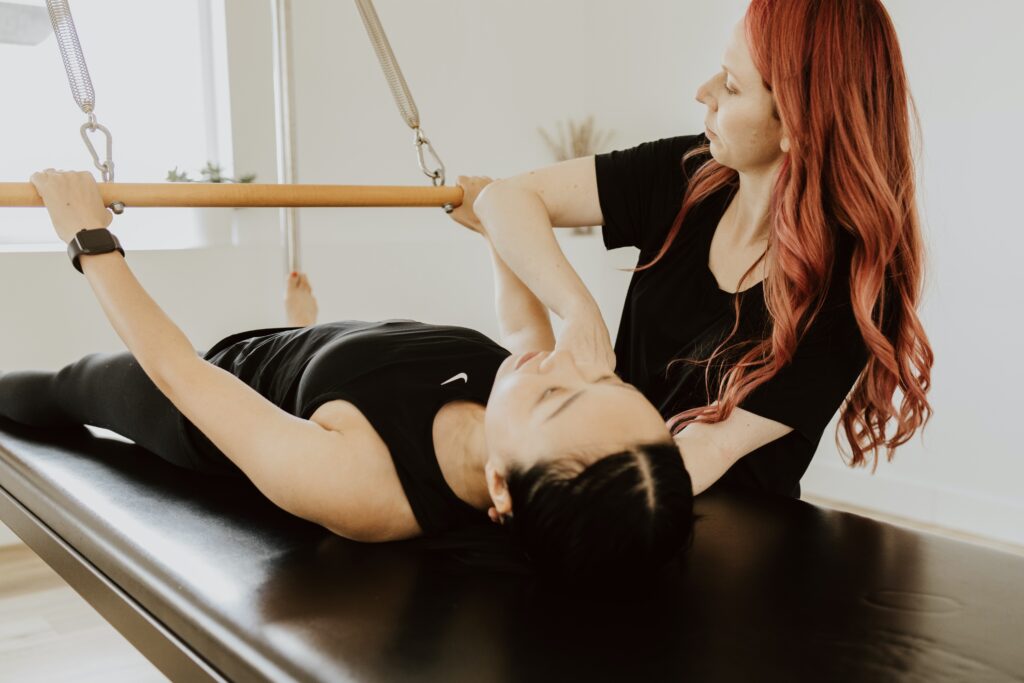In our practice we combine the benefits of Clinical Pilates with decades of combined experience in physiotherapy.

Treatment options
- Personalized Physiotherapy
- Personalized Clinical Pilates
- Collaborative Care
- We offer accessible collaborative programs created by a Physiotherapist based on an initial one on one assessment which is followed by implementation in one on one sessions with a Clinical Pilates Instructor
- There is ongoing communication between your Physiotherapist and Clinical Pilates Instructor to ensure you are well supported
- Moving with Chronic Pain Group Classes
- Open Gym
What is Clinical Pilates?
Similar to how a Physiotherapist uses manual therapy and massage techniques to treat their client, a Clinical Pilates practitioner also uses the exercises, equipment, and props from the practice of Pilates. At Embodied this includes a Pilates Reformer, a Pilates Cadillac, and a Pilates Chair. Since our team includes registered Physiotherapists, the majority of treatments are covered by an extended health plan that covers physiotherapy.
The equipment




Clinical Pilates is very complementary to physiotherapy. It brings more movement and breath focus to the process. By using Clinical Pilates techniques, Embodied clients can be more active in their healing process.

What are the benefits of Clinical Pilates?
- Improved range of motion
- Improved mobility, flexibility, and muscle strength
- Manage pain that limits regular activity
- Increased sense of where the body is in space (proprioception)
- Calming of the central nervous system which results in improved regulation of the multiple systems it controls
- Empowerment in the body and with movement.

What to expect for the first visit?
- A physiotherapy examination
We will assess how you move, and the ease of movement, to unravel the narrative of your body. Often people are beginning with some level of pain and dysfunction. At this step we want to get a sense of a baseline. - We deconstruct the movement into something more doable
Once we have identified possible causes of pain, or movement that is uncomfortable, we work backwards to something more doable. This might be very gentle and slow movements, which actually require more mental work. - We scale things back up
Once we have achieved some progress in a controlled way, we can start to scale things back up. We look for strategies for you to independently achieve this on your own in your real life. We rewrite the narrative together, allowing you to come out of pain, back into confidence and autonomy.
Options after the first visit?
After an initial assessment you can book follow up appointments with one of our registered Physiotherapists.
We also offer the option to work on a tailored exercise plan with a Clinical Pilates instructor after an initial assessment with Katie Evans. This can include up to 4 follow up sessions with a Clinical Pilates Instructor before a follow up with Katie is required. Details here.
Most plans cover this under physiotherapy.

What to wear?
Wear comfortable, flexible, moveable clothing. Anything that allows you to move freely without restriction. Sometimes it’s helpful to be in shorts, so please bring a pair.
